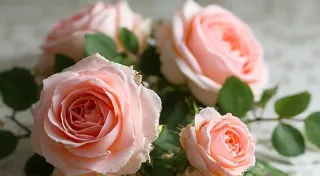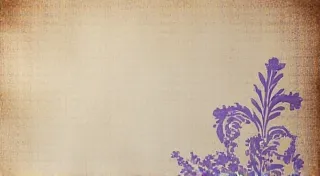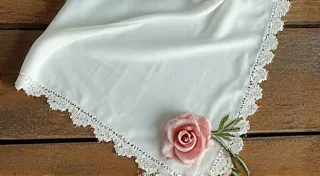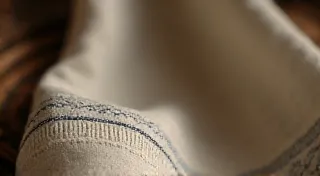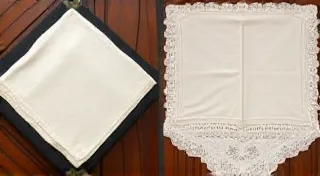Identifying Early 19th Century Handkerchiefs: Key Characteristics
The early 19th century (roughly 1800-1840) was a period of significant change in textile production and design. Identifying handkerchiefs from this era can be a rewarding but challenging endeavor. This article delves into the key characteristics that can help you accurately date these delicate pieces of collectible linens.
Fabrics of the Early 19th Century
While linen remained the predominant fabric for handkerchiefs, the early 1800s also saw an increasing use of cotton. Identifying the fabric is the first crucial step. Early cotton was often a coarser weave than later varieties.
Linen: Look for a characteristic crispness and a slightly rougher texture compared to later, refined linens. The weave will be relatively plain, often 4-over-1 twill. Examine the fabric closely for visible slubs (small knots or imperfections in the yarn) - these were common in handspun and early machine-spun linen. The transition from predominantly hand-spun to machine-spun linen significantly impacted the final texture and appearance, a detail that collectors value. The very nature of linen, and how it captured and preserved moments, speaks to a deeper history that’s often encoded within the fabric itself—a history we explore further in "The Whispers of Threads: Unraveling Personal Narratives in Antique Linen."
Cotton: Early cotton handkerchiefs will often have a heavier, less supple feel than later cottons. The weave might be a plain weave, and the yarn itself can appear thicker and less refined. Color will tend towards off-whites and creams rather than the stark whites we see later. The evolution of cotton production during this period, particularly improvements in bleaching and spinning techniques, resulted in noticeable changes in fabric quality over time.
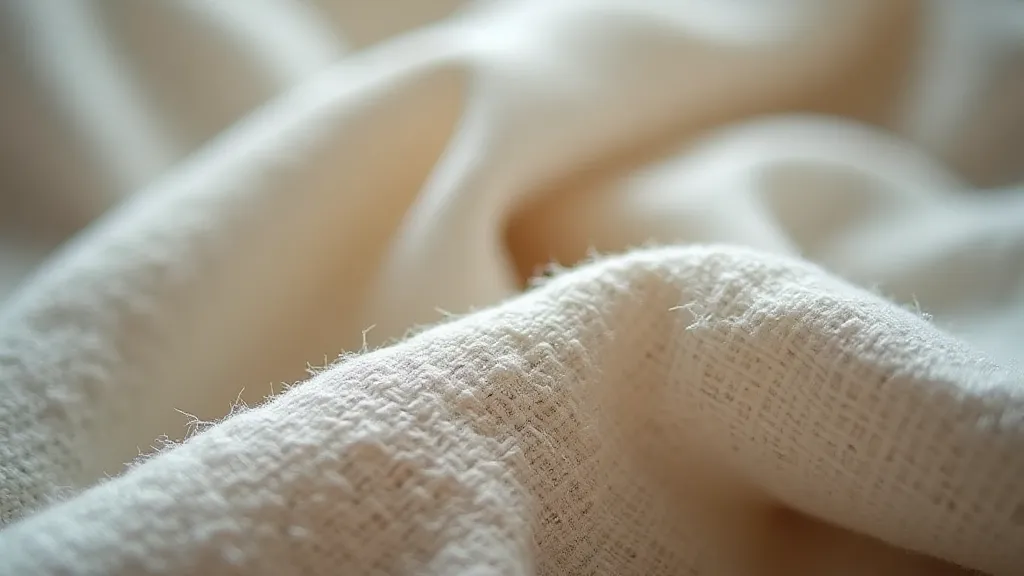
Monograms & Personalization
Personalized handkerchiefs were extremely common, and monograms provide valuable clues to the owner and sometimes, the region of origin. The significance of a monogram extended beyond mere identification; it served as a declaration of social standing and a subtle form of personal branding. These personalized details, often carefully preserved, speak volumes about the lives of their owners – a theme we explore in greater depth when considering how these small textiles preserved memories and connections.
Style and Script: Early 19th century monograms are typically rendered in elegant script fonts. The letters will be flowing and connected, with a strong emphasis on curves. Look for variations in letter size and spacing. Later monograms often employ blockier, more uniform styles. Understanding the nuances of these script variations is key; the precise style can reflect not just chronology, but also regional artistic preferences. Learning to identify these nuances may also reveal connections to broader trends in artistic expression, as evidenced by other contemporary forms of art.
Placement: Monograms were typically found in one of the corners of the handkerchief, although central monograms are also encountered. The size of the monogram can provide some indication of the owner’s status; larger, more ornate monograms often belonged to individuals of higher social standing. A keen eye for detail can unlock stories about the people who owned these precious textiles.
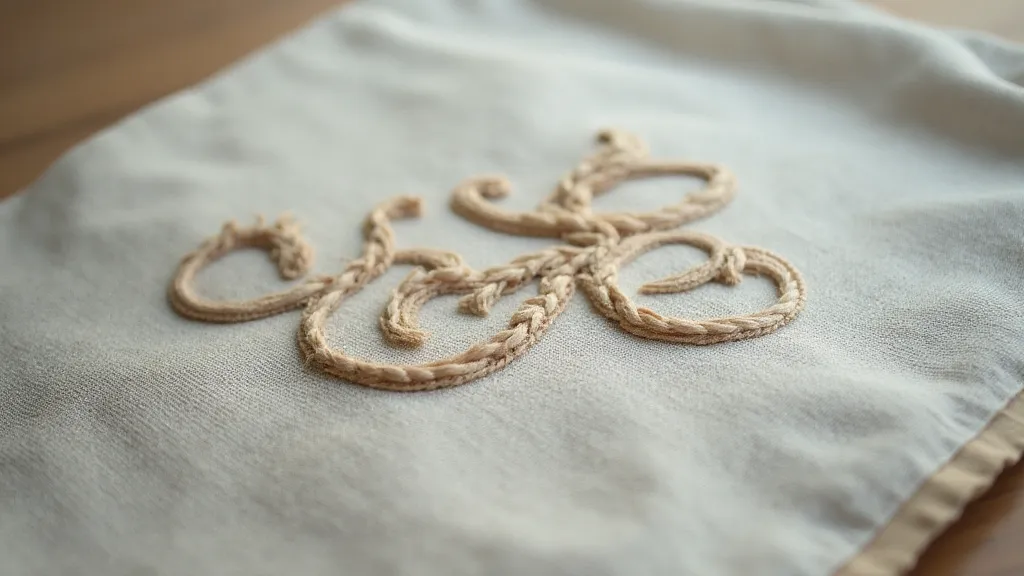
Edge Treatments: A Story of Craftsmanship
The edge treatment of a handkerchief offers significant dating clues. The complexity of the treatment often correlates with the timeframe. These finishes weren’t simply decorative; they represented the skill of the craftsperson and often indicated the handkerchief’s intended use – a simple hem for everyday use, more elaborate finishes for special occasions or gifts. The delicate nature of these items and the memories they hold often make them feel ephemeral, like echoes from the past – a sensation we explore further in "Ephemeral Echoes: The Fragility of Memory Woven into Collectible Linens."
Plain Hemmed Edges: These were the most common for everyday handkerchiefs. The hem will be neatly turned and stitched, often with a simple running stitch.
Beaded Edges: Beaded edges were more luxurious, often featuring glass beads sewn along the edge. The use of beads signified wealth and access to finer materials.
Scalloped Edges: These require more skill and often appear on higher-quality handkerchiefs. Scallops can be hand-stitched or, later in the period, machine-made. The shift from hand-stitched to machine-made scallops reflects broader industrial changes happening at the time.
Lace Edges: While less common in the very early 19th century, lace-edged handkerchiefs began to appear more frequently towards the mid-1800s. Identifying the type of lace (e.g., Bobbin lace, Needle lace) can further refine the dating. The artistry involved in creating these lace edges speaks to a wider appreciation for intricate handwork.
Embroidery Styles
Embroidery was a key element in decorating handkerchiefs, reflecting prevailing fashion and artistic styles. The skill of the embroiderer and the complexity of the design were often indicators of the handkerchief’s value and intended recipient. Understanding the context of these embellishments can provide a fascinating glimpse into the social customs of the era. Many of these intricate designs hold significant cultural meaning, hinting at beliefs, rituals, or local legends.
Early 19th Century Styles: Floral motifs were prominent, but unlike the elaborate Victorian designs that followed, early 19th-century embroidery tends to be more restrained and delicate. Look for stylized flowers, sprigs of leaves, and simple borders. The restrained elegance of these designs reflects a broader aesthetic preference for simplicity and naturalism.
Stitch Types: Common stitch types included satin stitch, chain stitch, and French knots. The quality of the embroidery (evenness of stitches, neatness of the lines) is a good indicator of its value and the skill of the embroiderer. For a deeper dive into the specific techniques employed, you might find our guide to common embroidery stitches explained helpful, with detailed visuals and step-by-step instructions.
Beyond the technical aspects, the motifs themselves often hold deeper meaning. For example, certain floral combinations might symbolize love, prosperity, or remembrance. The placement and size of these motifs also held symbolic weight, reinforcing the handkerchief’s purpose and the owner's status. These fragile textiles weren’t just decorative items; they were vessels of memory, holding secrets and narratives waiting to be uncovered.
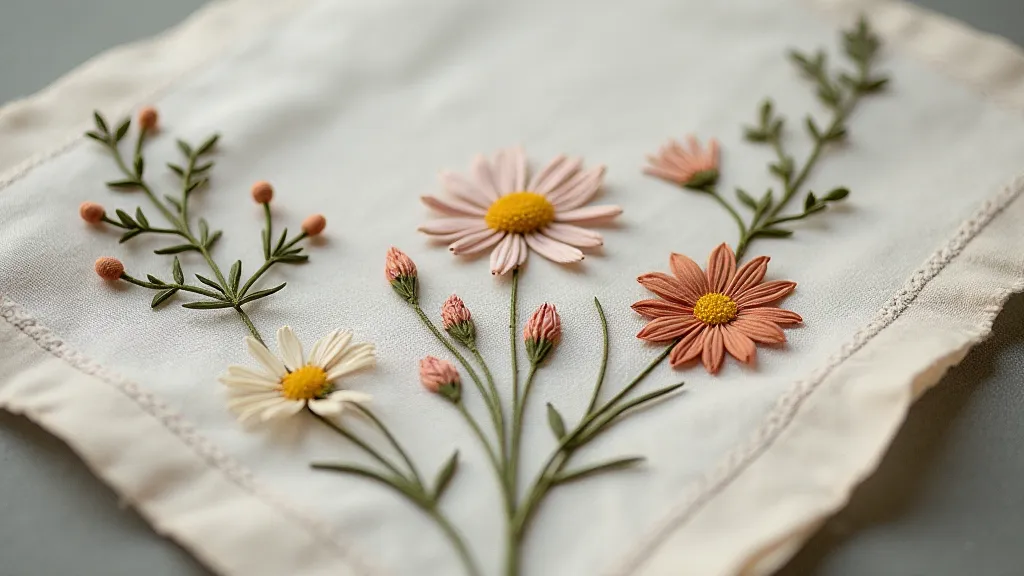
Further Considerations: The Language of Handkerchiefs
The history of handkerchiefs is intertwined with broader social, economic, and cultural trends. They served as expressions of identity, markers of status, and conduits for subtle communication. Often referred to as "bloom of silence," these linens communicated sentiments that could not be openly expressed. The fleeting nature of their existence contributes to the power of these textiles – they are tangible links to a past often shrouded in mystery. The fact that so many of these objects have survived, despite their delicate construction, is remarkable.
The handkerchief’s journey from raw material to finished product involved a complex network of artisans, merchants, and consumers. Examining the materials, techniques, and designs of these delicate textiles provides valuable insights into the lives and values of those who created and used them. Furthermore, regional variations in design and style reflect the unique cultural traditions of different communities. You can learn more about these fascinating regional variations by exploring regional variations in antique handkerchief embroidery. The subtle differences in stitch, pattern, and overall design are often clues to the origin and social standing of the owner.
Conclusion
Identifying antique handkerchiefs from the early 19th century requires careful observation and a keen eye for detail. By considering the fabric, monogram style, edge treatment, and embroidery, you can begin to unravel the story behind these delicate and beautiful pieces of history. Remember that no single feature guarantees a precise date, but a combination of factors can provide a reliable estimate. The more you learn about the materials, techniques, and styles of this period, the better equipped you’ll be to appreciate the artistry and historical significance of these treasures. These weren’t simply functional items; they were works of art, personal expressions, and silent messengers. The delicate nature of the textile itself often hints at the stories it holds, inviting us to ponder the lives of those who cherished it long ago. They offer a poignant reminder of the fleeting nature of time and the enduring power of human creativity and expression.
